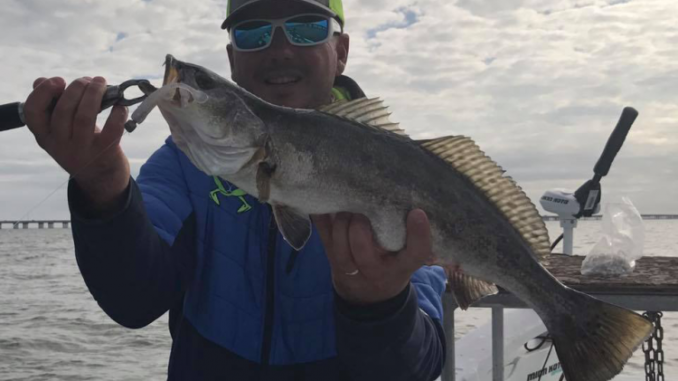
Buoy system gives gauge height, salinity, wind speed, direction and more for sites nationwide
Traditional lunar tables are great to give you an idea of high and low tide predictions for your general area, but localized weather conditions — especially wind — can have a big impact on tidal flow.
For Lake Pontchartrain angler Chas Champagne, who monitors the tide closely when targeting speckled trout, wind can sometimes render the lunar table predictions practically useless.
“Over here in the Pontchartrain Basin, you have big old Lake Borgne on your left and big old Lake Pontchartrain on your right, with these two little bitty creeks that connect them,” Champagne said. “So if you get a west wind over 15 mph, that tide is going to fall way harder than it’s going to come in. And an east wind will make it rise more than it will fall.
“When you get wind setups like that, you can’t go by lunar tables. Those predictions are from like five years in advance, and are simple gravity predictions from the moon.”
Lately, Champagne has gone high-tech to get real time, up-to-date information from a weather buoy positioned in the Rigolets via a website from the U.S. Geological Survey, which provides similar data for locations nationwide.
Just go here and find the buoy location nearest your targeted area for up-to-the-minute info.
“It’s as accurate as it gets,” Champagne said. “It’s a dead-on live reading of what’s actually happening.”
In addition to gauge height, the page for the Rigolets also shows real-time data including water temperature and salinity. Buoys at other locations along the coast also show wind speed and direction.
“I’ll wake up in the morning, and have a pretty good idea of what the tide is going to be doing from what it did the day before and the day before that. But sometimes it flip-flops on me and throws me a curveball,” he said. “I’ll just look at it in the morning, and as soon as it shows it’s about to start to fall, you can take it to the bank. As soon as it shows it’s falling, about an hour later it really starts falling good here, and vice versa.”
Real-time data is always within easy reach on your smart phone or home computer, he said.
“It’s an awesome tool to have. I love it,” Champagne said. “If I want to focus on a falling tide and I wake up at 5:30 in the morning and see it’s screaming in for some reason, I’ll just do all my work in the morning and fish the falling tide that evening.”


